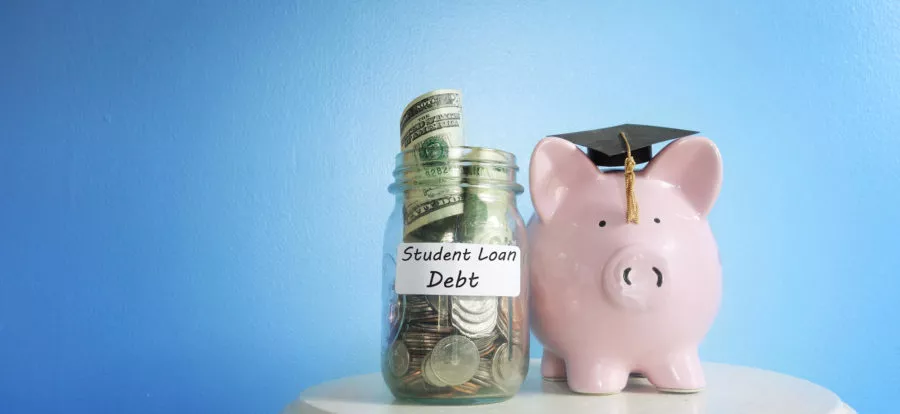Out of the more than 38,000 applicants—teachers, police officers, firefighters, and other public servants—for federal Public Service Loan Forgiveness, fewer than 300 have been approved so far, or less than 1 percent.
Tens of thousands have been denied qualification for the $700 million federal program, which was intended by lawmakers to help with the nation’s student debt crisis and assist low-paid employees whose work is essential to the nation’s health.
Do you have a story about PSLF? Please share it with NEA so that our lobbyists can more effectively make the case for legislative fixes to the PSLF program.
“We authorized $700 million dollars to help ensure public servants—including firefighters, teachers, and nurses—receive the loan forgiveness they have earned, and it’s maddening that the Trump Administration is letting it go to waste,” wrote U.S. Sen. Tim Kaine (D-VA) in an email to the Washington Post. Recently, Kaine and Sen. Kirsten Gillibrand (D-NY) introduced legislation to ensure educators and others get the loan forgiveness they have earned.
Educators have a particular burden: They pay the same skyrocketing college tuition as their classmates, but typically earn less. Sixty-three percent of school districts offer a starting teachers’ salary below $40,000, according to a new NEA report. And it’s not just new teachers: In more than 1,000 districts across the country, even the highest paid teachers, with advanced degrees and decades of experience, will never earn more than $50,000 a year.
The Promise of PSLF
The federal PSLF program promises to erase federal student loan debt that lingers after 10 years of conscientious repayment, so that educators can perhaps finally buy a home, or replace their 12-year-old Honda, or send their own kids to college.
“I decided to become a teacher instead of lawyer partly because of this program,” California high school teacher Yuri Buechler wrote recently in a NEA Today Facebook post. “Still happy with my choice, but my family would be financially destroyed…if the government doesn’t follow through with its promise.”
Buechler is six years into repayment. Meanwhile, Mary Binauea, a first-grade teacher in Yakima, Wash., who has spent her career in high-needs, high-poverty classrooms, will make her 120th qualifying, monthly loan payment in December. She expects that, at that point, her roughly $50,000 in remaining federal debt will be wiped away, so that she can turn her attention (and remaining funds) to the needs of her three college-age sons.
“It seems like it should be pretty straightforward,” she says. “If you send in the paperwork, and your employer provides proof of employment, it should work.”
But she knows firsthand that it isn’t that simple. Every year, she sends in the PSLF paperwork. Often she calls to check on it. “The last time I sent in [the paperwork], they sent a rejection letter that said I didn’t qualify because my employer didn’t put a phone number on their part. I looked at the copy of what I send and, surprise! There was the phone number,” she recalls.
Her experience is far from unique. Educators have told NEA that they’ve been rejected once, twice, multiple times for reasons that they say don’t make sense, or are inaccurate. Some say they were told to consolidate their loans, then told consolidation made them ineligible for PSLF. “Too many little rules kept me from eligibility,” wrote one educator.
In information provided to Sen. Kaine by the Department of Education (DOE), administrators disclosed that most people—about 29,000—were rejected from PSLF because they hadn’t filled out the right form. Meanwhile, the Trump/DeVos administration has tried repeatedly in proposed budgets to do away with PSLF altogether.
Kaine and Gillibrand’s bill, the “What You Can Do For Your Country Act of 2019,” which NEA strongly supports, expand eligibility for PSLF so that every type of federal loan and repayment program would be included in the program.
You can check out your current eligibility for PSLF with a navigation tool offered by NEA Member Benefits and Savi.
“[PSLF] has a critical mission, but due to numerous loopholes, coupled with a lack of oversight and mismanagement, it has not gone far enough in assisting those it was created to help. The ‘What You Can Do For Your Country Act’ offers several improvements and fixes that will help people who pursue meaningful, public-minded careers such as education,” said NEA Director of Government Relations Marc Egan. “The NEA is proud to support Senators Kaine and Gillibrand in closing the program’s loopholes to ensure public servants receive the benefits they deserve for entering professions we all depend on.”
Currently, more than 45 million Americans owe a collective $1.68 trillion in student debt. Last year, 69 percent of college students borrowed to pay for tuition, and graduated with an average debt of $29,800. For some, student debt has become a lifelong burden.
Binauea is determined not to be one of those educators, carrying her student loan debt into retirement, even if it takes a daily call to the DOE to get her paperwork straight. “They’re still saying I’m short on qualifying payments, and that’s a lie,” she says. “This summer, on my quote-unquote ‘time off,’ I’ll be making a lot of calls!”


